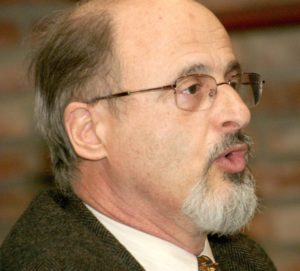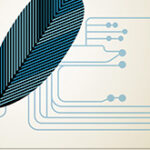 Prologue
Prologue
In 2006, Japanese researchers announced a technique to create cells which have the embryonic capacity to turn themselves into almost any type of cell in the body of mammals. These cells are known as “induced pluripotent stem cells” (iPS). At the beginning of this year, more accurately on 27th January 2014, another Japanese team, led by Haruko Obokata of the famous RIKEN Center for Developmental Biology in Japan, published in the journal Nature a surprisingly simple way of making cells more malleable than iPS induced pluripotent stem cells. And, this method is quicker and more efficient.
This discovery made a big impact on those fields which specialize in the study of stem cells. Prior to 2006, research with embryonic cells was carried out using cells which had come from destroyed embryos, which unleashed protests for ethical and religious reasons.
When the Japanese revealed the iPS technology in 2006, there was a revolution. An article in The Boston Globe explains why:
The discovery that stem cells, similar to embryonic cells could be produced in a laboratory by the “reprograming” of mature cells was hailed as a great advance in research and recognized with the award of a Nobel Prize in 2012. (Johnson, 2014) (Free translation).
Thanks to this discovery, stem cell research began to receive hundreds of millions of dollars from both public and private sources.
Then, in January 2014, the discovery published in Nature by Obokata of the RIKEN Centre would give an unbelievable boost for the generation of cells in a quicker and more efficient way, and that these cells could be used to treat illnesses in tissues which have been damaged or lost completely.
The story begins
February 2014
Dissenting voices are starting to be raised. A few days after the publication of the article in Nature, various scientists reported their concerns about this research in a blog, and published more than a dozen posts concerning the manipulation of the images included in the Obokata article in Nature¹, and the possibility of plagiarism on the part of the team of authors.
12th March 2014
The news of possible plagiarism and manipulation of data spreads and various media outlets worldwide publish articles concerning the denunciations and the possibility that Obokata would have to retract the article and Nature would have to behave in a responsible fashion.
14th March 2014
The Wall Street Journal reports that the director of the RIKEN Center, Ryoji Noyori, himself a Nobel Laureate, is apologizing for the possible errors in these article, and is setting up a committee to look into the matter.
Then a new article in The Boston Globe² introduces the suspicion that, in addition to the manipulation of images, there could also be a case of plagiarism. Over the course of a few weeks, other laboratories tried to replicate the experiment, but as the Whitehead Institute for Biological Research, which is affiliated with MIT, reported, these attempts had been unsuccessful. During this time, three co-authors of the Obokata article offer a retraction, but the others refuse. The RIKEN Center reports that there may have been at least two cases of manipulation of the images, and in addition, the possible plagiarism of the “Methodology” section, which could have been taken from Obokata’s doctoral thesis; however, this is a description which is different to the procedure which was actually used.
20 March 2014
The controversy surrounding Haruko Obokata and the possibility that the accusations of plagiarism were true come as threats to the freezing of funds for research on stem cells.
17 April 2014
The RIKEN Institute, founded in 2007, is a specialized department of the University of Weseda, a prestigious Japanese university created in 1882. As a result of the criticisms of the work of Obokata’s group, the difficulties in reproducing the results and the accusations of plagiarism, the university orders an enquiry, not only into these works but into ALL doctoral theses approved in the institute since its founding, representing an estimated 280 doctoral theses.
The investigation will not be a quick or an easy one. The initial results are not expected until July with more in-depth probes to be conducted on any theses that show evidence of serious misconduct. (BAILEY 2014)
Epilog
The serious and responsible reaction of Weseda University should be noted, as it has considered it prudent to take drastic measures to cope with this problem, since the scandal has attracted international attention to it. ALL theses approved by the institute will be analyzed in search of evidence of serious misconduct and/or plagiarism.
My reflections
What would happen if the countries participating in the SciELO Program were to exercise a control on plagiarism on all the theses produced over the past few years? Would this result in a theses genocide?
Given that the problem exists, including in institutions and in elite journals like Nature, would it not be imperative for the SciELO journals to establish a procedure of verification of plagiarism in its explicit methodology?
The quality of a journal is not established solely through formal considerations, such as an editorial committee, complying with the publication frequency, summaries in two languages, peer-review, etc., but also by establishing a system or procedure to be used to detect plagiarism.
This post is open to opinions in the Comments section.
Notes
¹ Alleged image manipulation. Haruko Obokata, STAP stem cells. 2014. http://stapcell.blogspot.in/
² JOHNSON, C. Y. Allegations are now swirling that the paper has issues with plagiarism. Probe of stem cell research finds errors, but no fraud so far. The Boston Globe. 14 March 2014. Available from: http://www.bostonglobe.com/news/science/2014/03/14/japanese-investigation-stem-cell-research-finds-errors-but-fraud-far/ZOoT6haaj6hWYpScF1gqUK/story.html
References
OBOKATA, H., et al. Stimulus-triggered fate conversion of somatic cells into pluripotency. Nature. 30 January 2014, vol. 505. Available from: http://www.nature.com/nature/journal/v505/n7485/full/nature12968.html
CYRANOSKI, D. Acid bath offers easy path to stem cells: Just squeezing or bathing cells in acidic conditions can readily reprogram them into an embryonic state. Nature. 2014, vol. 505. Available from: http://www.nature.com/news/acid-bath-offers-easy-path-to-stem-cells-1.14600
JOHNSON, C. Y. Scientists discover a new, simpler way to make stem cells. The Boston Globe. 29 January 2014. Available from: http://www.bostonglobe.com/news/science/2014/01/29/scientists-discover-new-simpler-way-make-stem-cells/EakSV8vc98L1wYqh97F3rK/story.html
The “landmark” stem cell paper may be retracted. The Hindu. 12 March 2014. Available from: http://www.thehindu.com/sci-tech/science/the-landmark-stem-cell-paper-may-be-retracted/article5777550.ece
MARTIN, A., and SEKIGUCHI, T. Head of Japan’s Riken Institute Apologizes Over Stem-Cell Papers. Disputed Papers Contained ‘Serious Errors’. The Wall Street Journal. 14 March 2014. Available from: http://online.wsj.com/news/articles/SB10001424052702304914904579438131341933464?mg=reno64-wsj&url=http%3A%2F%2Fonline.wsj.com%2Farticle%2FSB1000142405270230491490457943813 1341933464.html
Interim report on the investigation of the Obokata et al. articles. RIKEN. 14 March 2014. Available from: http://www.riken.jp/en/pr/press/2014/20140314_1/
BAILEY, J. Plagiarism Allegations Chill Promising Stem Cell Research. IThenticate. 20 March 2014. Available from: http://www.ithenticate.com/plagiarism-detection-blog/plagiarism-allegations-chill-promising-stem-cell-research#.U1WgkGwU-00
BAILEY, J. Japanese University to Evaluate All Science and Engineering Theses. iThenticate.17 April 2014. Available from: http://www.ithenticate.com/plagiarism-detection-blog/japanese-university-to-evaluate-all-science-and-engineering-theses?utm_campaign=blog-alerts&utm_source=hs_email&utm_medium=email&utm_content=12538321&_hsenc=p2ANqtz–uRAvZffrhmBtVF-vJmW_U8QbxHon8DChGhB1XqWDSN0-iPzsmMMmXadK2MB9Z2zDgltFSQQpN02SuTbB3bzD93YaKiw&_hsmi=12538321#.U1WgT2wU-00
 About Ernesto Spinak
About Ernesto Spinak
Collaborator on the SciELO program, a Systems Engineer with a Bachelor’s degree in Library Science, and a Diploma of Advanced Studies from the Universitat Oberta de Catalunya (Barcelona, Spain) and a Master’s in “Sociedad de la Información” (Information Society) from the same university. Currently has a consulting company that provides services in information projects to 14 government institutions and universities in Uruguay.
Translated from the original in Spanish by Nicholas Cop Consulting.
Como citar este post [ISO 690/2010]:

















This is a difficult situation for me to understand; why would a scientist severely falsify findings that would affect an area of major public interest? Obviously related entities would be interested in employing new techniques, but they would soon realize that any changes they made had no serious positive affects on their products…it seems a very short-sighted scheme and I would be interested to know the reasoning and circumstances behind it. Perhaps the offending scientist(s) had a logical reasoning for their actions, or expected a different resulting chain of events.
(Johannesen, Valde, and Whedbee, 2008, p. 73)
Dear colleague
The reasons for individual researchers, and academics in general, resort to falsification of data, plagiarism, and other ethical lapses are as varied as the psychology of human beings.
It may also be the craving to be the first to get a result, or finding something innovative, because of the fame or prizes, or career advancement, including the money that is involved.
Finally scientists are human beings like you and me with all the weaknesses and foibles of our own species.
Regards
Ernesto
Coincido con Ernesto, los cientificos también son humanos. ScIELO debe establecer procedimientos de verificación de plagios.
Marlene